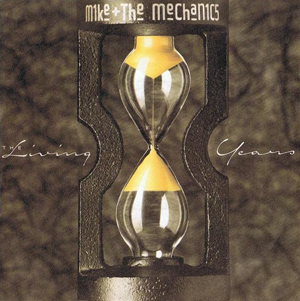The View from Here |
 |
Released: March 1989 Peak: -- Sales (in millions): -- Genre: neo prog rock |
Tracks: Click on a song title for lyrics.
Total Running Time: 48:58 The Players:
Additional Musicians:
|
Rating: 3.065 out of 5.00 (average of 9 ratings)
Awards: (Click on award to learn more). |
About the Album: The View from Here was the second and final studio album from Giraffe, “a pretty good bay area pop band led by Kevin Gilbert…[whose] sound leans toward progressive and maybe even fusion a little.” SF “Kinda danceable poppy prog.” SF The View from Here is loaded with great hooks, excellent vocals, and taped gimmicks between the tracks to give sort of a continuity feel.” SF Giraffe member Scott Smith says of the album, “This was another stellar Kevin Gilbert production. It had vision, great songs, and kept the whole progressive, yet commercial aspect of Giraffe intact. I still think it’s a wonderful record.” SS The album was finished fresh off the band’s return from Band Explosion, an international competition for unsigned bands in which they took second. Ironically, the band’s success would be their undoing as Gilbert would be approached by producer Pat Leonard, a judge from the contest, about forming the band Toy Matinee. Both this album and its predecessor are very rare, reportedly with only printings of 500 for the first and 1000 for the second. However, most of the songs from the two albums were made available on the 1999 Giraffe compilation, available through PopPlusOne.com. The View from Here was represented by 8 tracks; only Waiting on the Rain and I Will Survive failed to make the cut. Two of the songs from this album would also show up again on future Gilbert solo releases. An altered version of All Fall Down graced Gilbert’s first solo effort, 1995’s Thud. The updated version added a third verse that more subtly built into the “all fall down” chorus. The original chorus, with the line “Down, down, down, they all fall down/ Buildings and bridges while we just stand around” was modified in the ’95 version to close the song. The stronger verse says “Buildings and bridges all leveled to the ground/ Cities and nations and we stand around/ Someone unlocked the big cage and the beast cannot be found/ So strike up the music and we’ll all fall down.” Compare the lyrics for the two songs here: Similarly, the song From Here to There was revisited years later on Gilbert’s posthumous second solo album The Shaming of the True. It wasn’t lyrically changed, but it’s theme of finding a way back home fit well into the latter album’s concept of a fallen rock star trying to, well, find his way back home.
Notes: The Kevin Gilbert estate released the two Giraffe albums, The Power of Suggestion and The View from Here, in a set with a DVD which features a nine-song live set from the Gold Star Café at Mountain View, California on April 28, 1988. It also has an interview and the two songs they performed at the Yamaha Soundcheck National Finals at the Universal Ampitheatre in Los Angeles, California on September 16, 1988; an interview by Michelle Blaine with Kevin Gilbert; and video of the Band Explosion World Final at the Fuji Television Studio in Tokyo, Japan, from February 9-12, 1989. Finally, the DVD includes a video of “This Warm Night.” The set is available at PopPlusOne.com. |
Resources and Related Links:
First posted 4/2/2008; updated 6/5/2021. |










